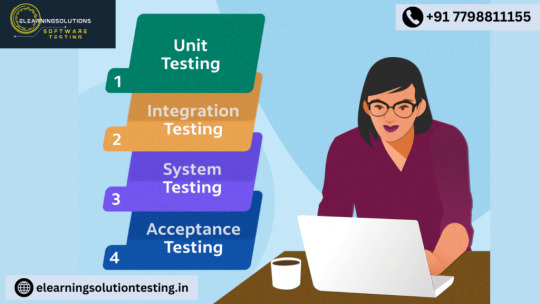#TestingMethodologies
Explore tagged Tumblr posts
Text
Software testing is an essential aspect of software development that ensures the quality, reliability, and performance of applications. "The Art of Software Testing" by Glenford J. Myers is a classic book that provides a deep understanding of the principles, techniques, and best practices of software testing. Below is a user-friendly, step-by-step breakdown of the key outcomes and takeaways from the book, designed to help both beginners and experienced testers enhance their skills.
#SoftwareTesting#QA#QualityAssurance#SoftwareDevelopment#TestingBestPractices#TheArtOfSoftwareTesting#TechBooks#TestAutomation#ManualTesting#TestingTechniques#SoftwareTestingBooks#TestDrivenDevelopment#TechEducation#BugTracking#TestingMethodologies#TestStrategies#TechTutorial#TestCaseDesign#TestQuality#SoftwareEngineering#AgileTesting#ContinuousTesting#ProgrammingBooks#TestingTools#TestPlanning#SoftwareQuality#TestingCommunity
0 notes
Text
Software Testing Methodologies
The collection of testing techniques employed across the software development lifecycle, from unit testing to system testing, is referred to as methodologies. The foundation of the testing process is thought to be choosing a suitable testing methodology. read more

0 notes
Text

Testing methodologies guide the process of evaluating software quality. They include Agile, Waterfall, Continuous Testing, TDD, and BDD, each offering distinct approaches for effective testing.
1 note
·
View note
Text
White Box Testing: A Complete Guide to Transparent Software Testing
In the world of software development, white box testing is a game-changer. Unlike black box testing, where the focus is on inputs and outputs, white box testing gives you full access to the internal workings of your code. This means you can test the logic, identify bugs, and improve code quality right from the source.
What is White Box Testing?
White box testing, also known as clear box testing or glass box testing, requires testers to understand the internal structure of an application. With full visibility into the source code, testers can design test cases that ensure all code paths are tested.
Key Features:
Complete Code Visibility: Testers can view all parts of the code, including variables, functions, and classes.
Early Bug Detection: Issues are identified earlier in the development cycle, saving time and resources.
Better Test Coverage: Testers can focus on both logical conditions and code execution paths.
Types of White Box Testing:

Statement Coverage: Ensures every statement in the code is executed at least once.
Branch Coverage: Tests every possible branch or decision in the code.
Path Coverage: Ensures every possible path through the code is tested.
Condition Coverage: Ensures each logical condition is tested for both true and false.
Benefits:
Enhanced Code Quality
Improved Security
Faster Debugging
While it can be time-consuming and requires technical expertise, the advantages of white box testing far outweigh the challenges, especially when combined with other testing methods.
For teams ready to take their testing efforts to the next level, tools like Keploy can streamline testing workflows and ensure comprehensive coverage.
#WhiteBoxTesting#SoftwareTesting#QA#CodeQuality#TestAutomation#SoftwareDevelopment#TestingMethodology#TechTools#TestCoverage#BugDetection#DeveloperTools#SecurityTesting#SoftwareEngineering#TestStrategies#Keploy#DevOps#AgileTesting#CodeReview#Debugging#DevelopmentEfficiency#TestingBestPractices#AutomationTesting
0 notes